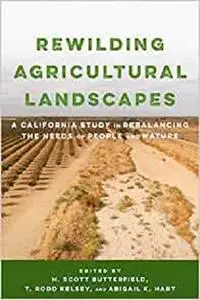Rewilding Agricultural Landscapes: A California Study in Rebalancing the Needs of People and Nature by H. Scott Butterfield
English | ISBN: 1642831263 | 288 pages | EPUB | April 8, 2021 | 2.86 Mb
English | ISBN: 1642831263 | 288 pages | EPUB | April 8, 2021 | 2.86 Mb
As the world population grows, so does the demand for food, putting unprecedented pressure on agricultural lands. At the same time, climate change, soil degradation, and water scarcity mean that productivity of many of these lands is deteriorating. In many desert dryland regions, drinking wells are drying up and the land above them is sinking, soil salinity is increasing, and poor air quality is contributing to health problems in farm communities. "Rewilding" the least productive of these cultivated landscapes offers a sensible way to reverse the damage from intensive agriculture. These ecological restoration efforts can recover natural diversity while guaranteeing the long-term sustainability of the remaining farms and the communities they support.
This accessibly written, groundbreaking contributed volume is the first to examine in detail what it would take to retire eligible farmland and restore functioning natural ecosystems. Rewilding Agricultural Landscapes uses the southern Central Valley of California, which is one of the most productive and important agricultural regions in the world, as a case study for returning a balance to agricultural lands and natural ecosystems. This project—one of the largest rewilding studies of its kind in dryland ecosystems—has shown that rewilding can slow desertification and provide ecosystem services, such as recharged aquifers, cleaner air, and stabilized soils, to nearby farms and communities. Chapters examine what scientists have learned about the natural history of this dryland area, how retired farmland can be successfully restored to its natural wild state, and the socioeconomic and political benefits of doing so. The book concludes with a vision of a region restored to ecological balance and equipped for inevitable climate change, allowing nature and people to prosper. The editors position the book as a case study with a programmatic approach and straightforward lessons that can be applied in similar regions around the world.
The lessons in Rewilding Agricultural Landscapes will be useful to conservation leaders, policymakers, groundwater agencies, and water managers looking for inspiration and practical advice solving the complicated issues of agricultural sustainability and water management.



